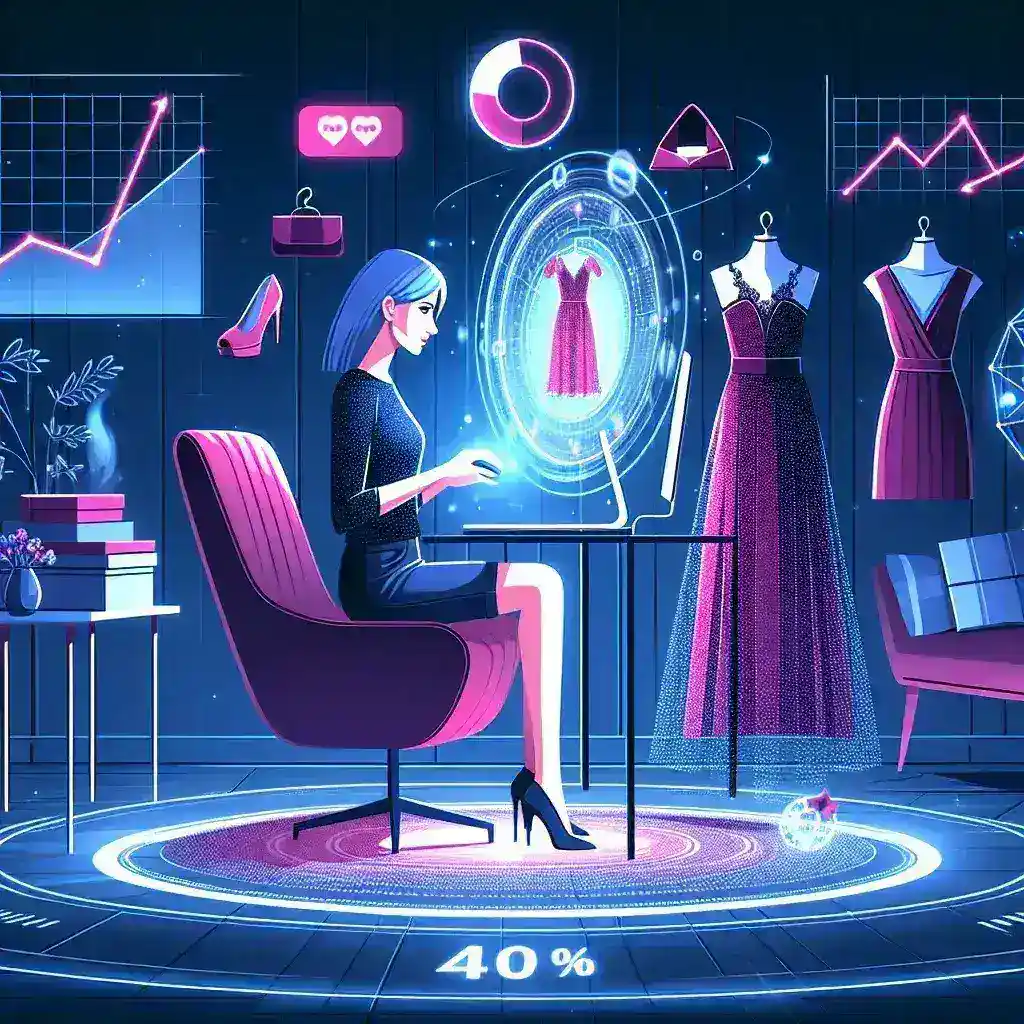Introduction
In the rapidly evolving world of e-commerce, brands are constantly seeking innovative solutions to enhance customer experience and boost sales. One groundbreaking advancement in this space is virtual product try-on technology. This technology allows consumers to visualize products on themselves in real-time, significantly altering their shopping behavior. Recent statistics reveal that implementing this technology can lead to an impressive 40% increase in online retail conversion rates. In this article, we will delve into the intricacies of virtual try-on technology, its benefits, and how it is shaping the future of online shopping.
The Emergence of Virtual Try-On Technology
Virtual try-on technology has its roots in augmented reality (AR) and artificial intelligence (AI). Initially utilized in the gaming industry, these technologies have made their way into retail, particularly in industries like fashion, eyewear, and cosmetics. The core idea is to enable customers to see how products will look on them without the need for physical samples.
The Mechanism Behind Virtual Try-On Technology
This technology employs advanced algorithms and machine learning to create realistic representations of products. Using a smartphone camera or a computer webcam, customers can overlay digital products onto their images or live video feeds. For example, a customer can see how a pair of sunglasses looks on their face or how a particular shade of lipstick complements their skin tone.
Key Features of Virtual Try-On Solutions
- Real-Time Visualization: Customers can see products in real-time, enhancing their confidence in making purchase decisions.
- Personalization: Virtual try-ons can be tailored to individual preferences, offering recommendations based on previous selections.
- Accessibility: This technology can be integrated into websites and apps, making it easily accessible to a broad audience.
Impact on Conversion Rates
The implementation of virtual try-on technology has shown remarkable effects on conversion rates. A study conducted by various retail brands indicated that integrating this technology resulted in a 40% increase in sales conversions. But what factors contribute to this significant uplift?
Building Customer Confidence
One of the primary reasons for increased conversion rates is the level of confidence virtual try-on technology instills in customers. When shoppers can visualize how a product will fit or look on them, they are more likely to complete a purchase. This confidence reduces the uncertainty often associated with online shopping, where customers typically cannot touch or try on products.
Enhancing User Engagement
Virtual try-on experiences create a more engaging shopping environment. Customers become active participants in the shopping process, exploring different options and experimenting with styles. This increased engagement can lead to longer time spent on the site, further increasing the likelihood of a sale.
The Advantages of Virtual Try-On Technology
1. Improved Customer Experience
By allowing customers to try products virtually, retailers can significantly enhance the overall shopping experience. This technology eliminates the frustration of returns due to wrong sizes or shades, thus improving customer satisfaction.
2. Reduced Return Rates
One of the most significant pain points for online retailers is high return rates. Virtual try-on technology helps mitigate this issue by allowing customers to make informed decisions, thereby reducing the likelihood of returns and associated costs for retailers.
3. Increased Sales Opportunities
With enhanced visualization, customers are more inclined to explore various products. Retailers can cross-sell and up-sell more effectively, as customers can see how different items work together.
4. Competitive Advantage
In a crowded marketplace, offering virtual try-on capabilities can set a brand apart from competitors. It showcases innovation and understanding of consumer needs, drawing in tech-savvy customers.
Challenges and Considerations
1. Implementation Costs
While the benefits of virtual try-on technology are clear, the initial setup and integration costs can be a barrier for some retailers. Developing a high-quality virtual try-on experience requires investment in technology and design.
2. User Adaptation
Some customers may be hesitant to adopt new technology. Retailers must ensure that the virtual try-on experience is intuitive and accessible to encourage widespread use.
3. Technology Limitations
While advancements have been made, there are still limitations in accuracy and realism that need to be addressed. Brands must continually work to improve the technology to meet customer expectations.
Looking Ahead: The Future of Virtual Try-On Technology
As technology continues to evolve, so too will virtual try-on capabilities. We can expect greater accuracy, more realistic representations, and even enhanced interactivity. For instance, future developments could include AI-driven personal styling advice based on previous purchases and preferences.
Integration with Other Technologies
Furthermore, virtual try-on technology may become increasingly integrated with other advancements such as social media filters, allowing users to share their virtual try-on experiences with friends and family. This social aspect could drive even more traffic and conversions for retailers.
Conclusion
Virtual product try-on technology is not just a trend; it represents a significant shift in the e-commerce landscape. By increasing online retail conversion rates by 40%, this technology transforms how customers shop online, making it more interactive and personalized. As retailers continue to adopt and refine this technology, the future of online shopping looks brighter than ever. Embracing such innovations can lead to not only increased sales but also improved customer loyalty and satisfaction.

